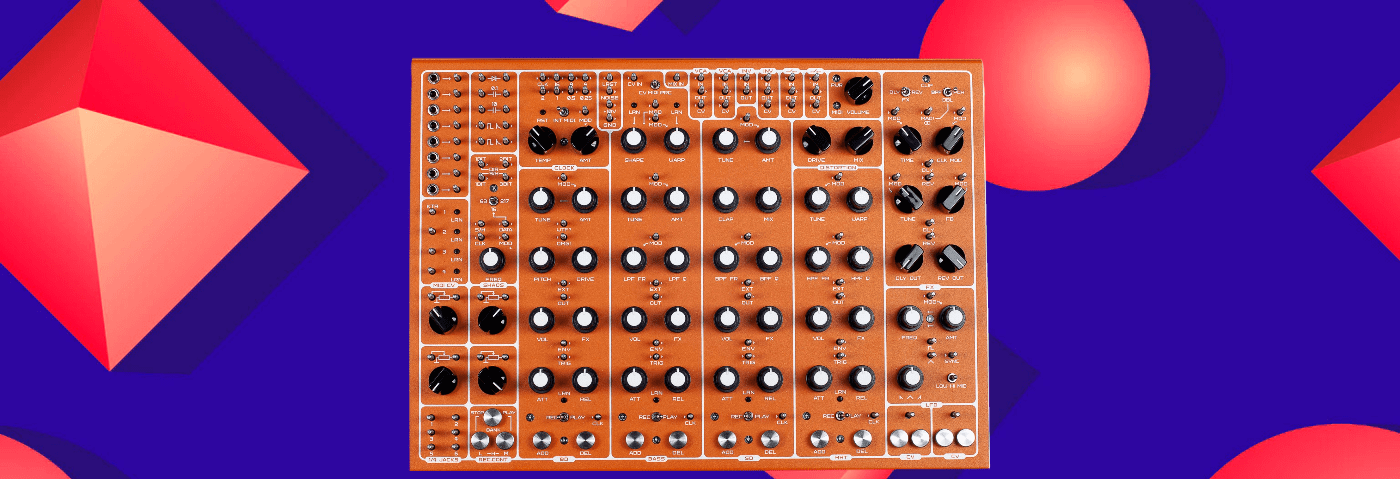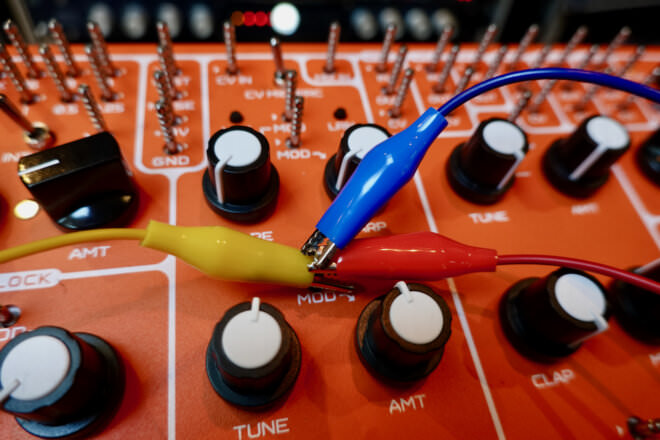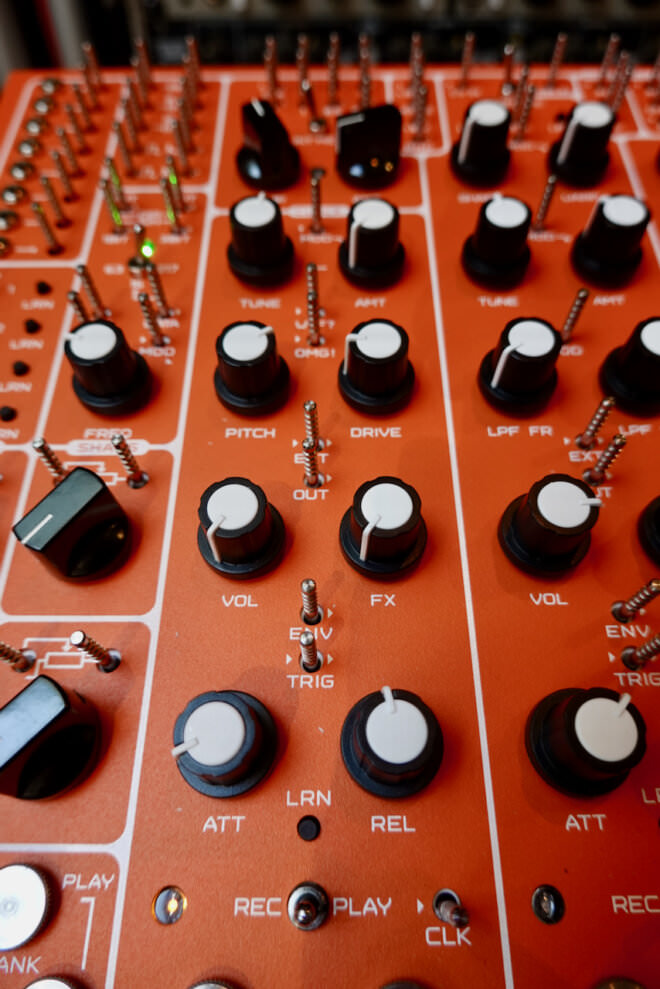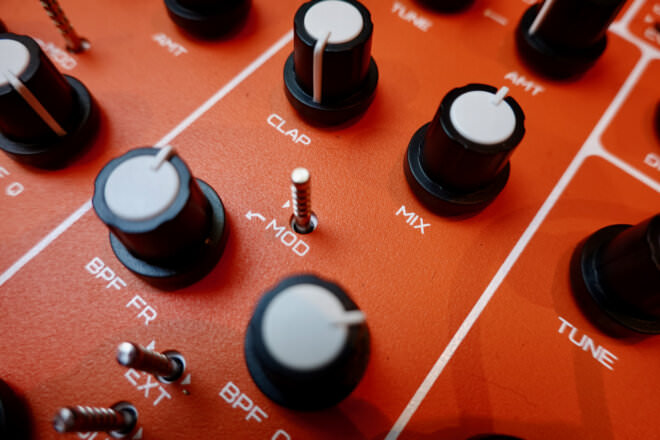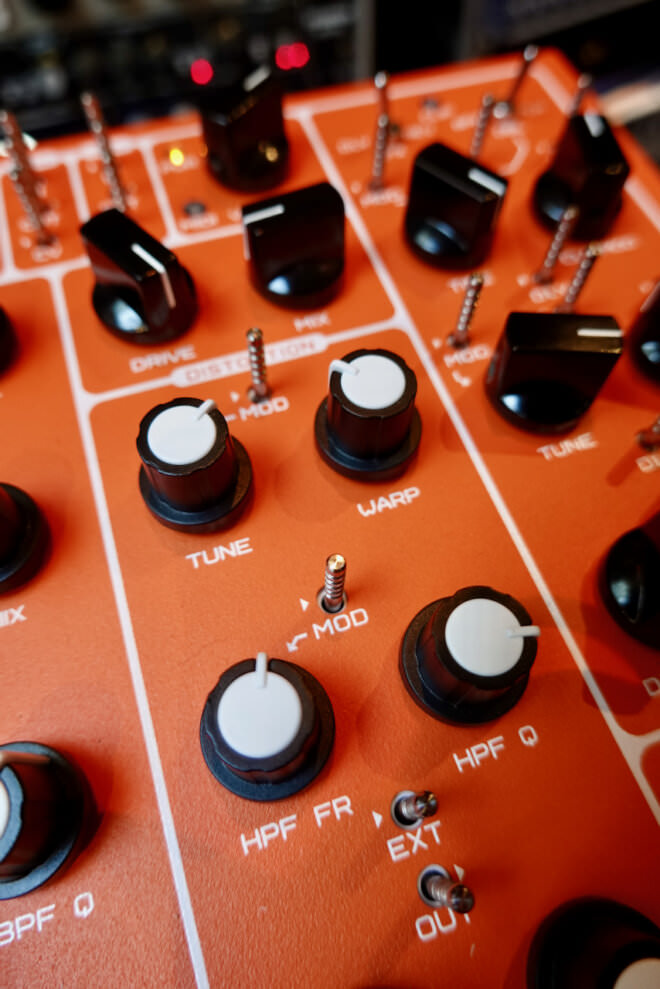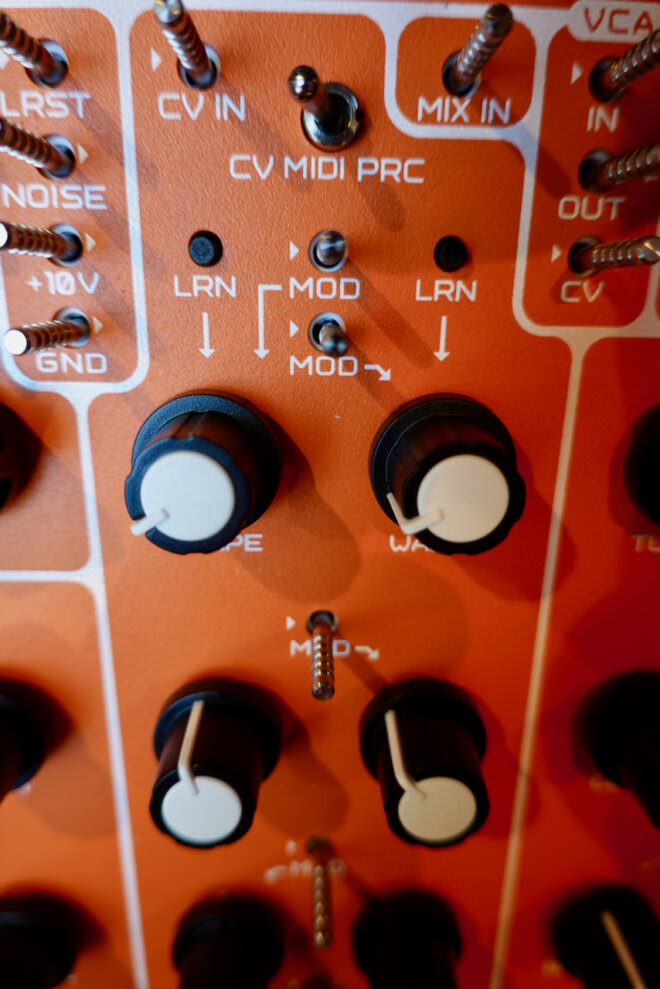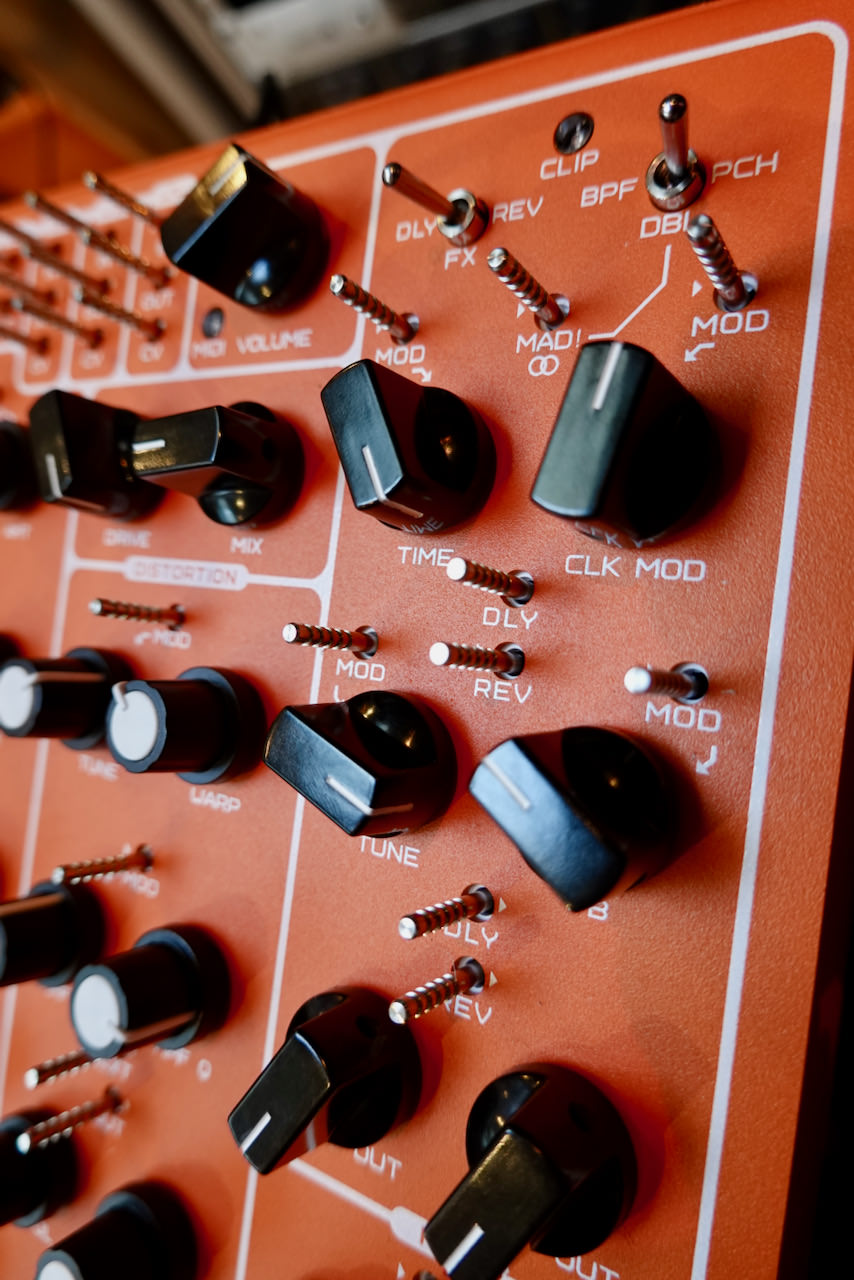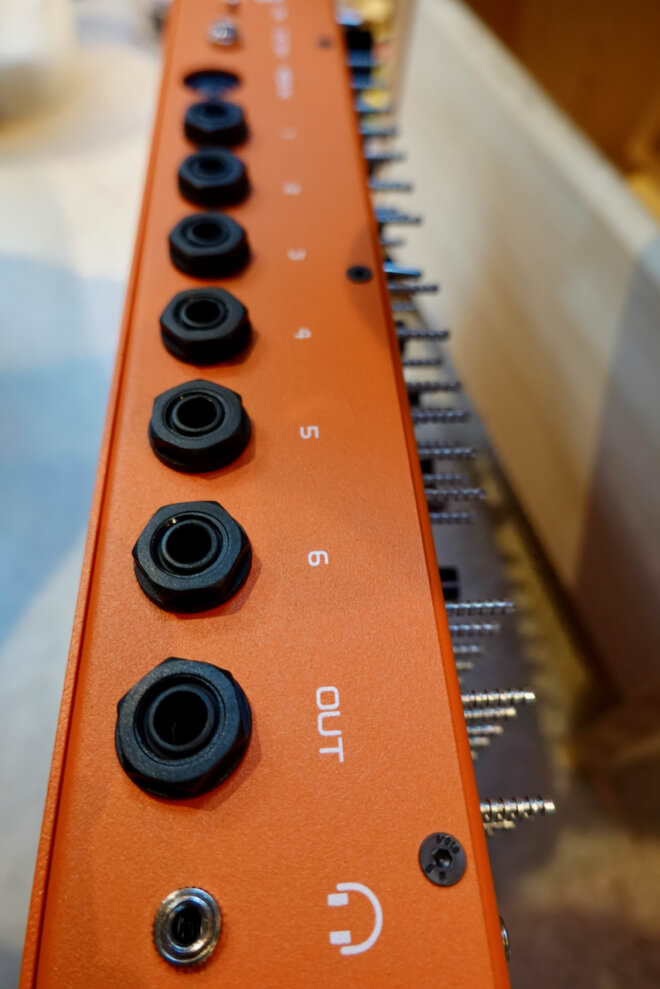With its brilliant design and variety of modules to choose from, the Soma Pulsar-23 introduces a refreshing take on analogue, semi-modular drum machines. If you’re an explorer, open to rhythmic experimentation, then the Pulsar-23 may be a perfect addition to your studio.
The SOMA Laboratory story begins with the LYRA-8 synthesizer, a so-called ‘organismic’ analogue synthesizer. Their aim with the LYRA-8 and the reason for its descriptor was to create a synth that worked in a more organic way, where multiple elements interact in a way that is complex, evolving and not entirely predictable.
Of course, this is exactly the kind of territory over which modular synthesis systems have staked a claim. The difference here is that Soma creates individual instruments and devices that embrace this philosophy. These range from synths, drum machines and sequencers to electro-acoustic and voice-based instruments incorporating tactile control.
The Pulser-23 straddles a number of these areas, but in basic terms, it is essentially a 4-voice, semi-modular drum and bass machine (note: drum plus bass rather than drum and bass the genre!) All clear?! Let’s move on!
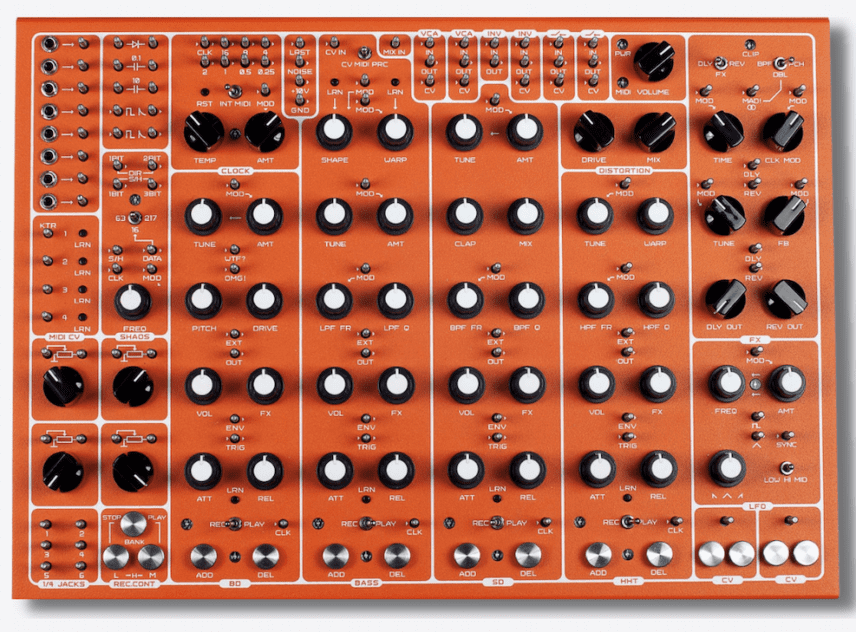
Signal Patching With The Pulsar-23
Forget what you know about drum machines, sequencers and even conventional Eurorack modular systems, as the Pulsar-23 does things its own way. I first realised this after swiftly moving from the QuickStart guide (more of a quick reference) back to the full manual. Yes…I know…RTFM!
I’m not suggesting that getting some noise out of the unit wasn’t possible without document diving, but more than any other recent piece of kit, the manual was essential for understanding how some of the elements worked on this fascinating slab of orange craziness – you’ll see why I describe it as such shortly! The manual also provides some interesting background information on the unit’s design methodology which really help with those initial forays into sound creation.
The Pulsar-23 gets its name from the fact that it combines 23 independent modules for the purposes of sound generation, triggering, modulation and processing. At its core are four sound generators allocated to Kick, Bass, Snare and Hi-Hat duties, and with different circuit structures for each. Common features across all of them however are the two-stage (Attack/Release) envelope, Volume and Effects parameters and patch points for routing audio into and out of each generator.
Below these, you will also find the two circular metal plates labelled ADD and DEL as well as a Record/Play switch. These relate to the built-in loop recorder which we’ll explore further shortly. Another intriguing feature of the Pulsar-23 is the numerous small ribbed metal poles scattered across all the modules. These are for signal patching when using the enclosed alligator clips.
At first, this might seem like a quirky and solely aesthetic choice. But, the units creator Vlad Kreimer makes the advantages of this approach clear in the manual with comparisons to the more standard 3.5mm mini-jack, with cost, space and reliability being the most obvious. However, it is only once you get patching that you realise the further stated benefits.
You realise that multiple clips can be attached to one pole/pin, combining or splitting signals is very easy and adding external components (a cucumber is given as one example in the manual!?) is also very easy. This is very much akin to a circuit-bending approach – Soma is explicit about experimentation being encouraged and that you can connect inputs to outputs without causing damage.
The Bass Drum Module
The BD (Bass Drum) module is based around a single swept-pitch oscillator, with base pitch determined by the TUNE knob, PITCH controlling the rate and depth of the step modulator, and DRIVE adjusting the BD waveform from triangle to square (and with a purer sine in the 12 o’clock position). TUNE has its own modulation input with a dedicated knob for adjusting its depth. The WTF? and OMG! pins patch into the pitch modulator and triangle generator, but just like a true circuit, bending can be a bit unpredictable in use.
The Pulsar is capable of producing thumping and powerful kick drums with a good degree of tonal variation. At the fastest Attack times, the envelopes controlling the onboard VCAs for each voice add a noticeable click to the start of each note. This can work well for percussion sounds, though is easily removed by nudging Attack time up slightly if required.
On the subject of envelopes, the AR envelopes do in fact have a sustain stage, which means that the length of the pulse at the TRIG input will have a bearing on the shape of the sound. For snappier percussion, you may need to patch the triggers via one of the onboard pulse processors. If you feel that a voice needs further tonal shaping then its output can be fed into another voice’s circuitry – for example, using the filtering from the BASS section on the BD.
Creating Snare And Clap Effects
Skipping to the 3rd slot (SD) catering for snare and clap sounds, the TUNE control adjusts the tonal spectrum of its noise generator (once again with a modulation input and associated pot).
Pushing up the CLAP control adds a staggering Attack effect, whilst MIX adjust the balance between convention Pink noise and the more complex spectral noise. Overall tonal shaping is taken care of with the resonant band-pass filter (with a cutoff modulation input).
Again, this is quite a flexible section, with high resonance settings adding more conventionally toned sounds to its palette, though for me it worked better for snares than claps (though this is probably more a matter of personal taste).
Moving on, the Hi-Hat (HHT) section is somewhat simpler, with TUNE and WARP parameters to change the brightness and metallic ‘flavour’ of the noise generator, which is then routed through a resonant high-pass filter.
It’s all about that bass
Finally, we come back to the BASS section, which goes further than the others in terms of control. In essence, this is a simple single oscillator (DCO-based) monosynth with a resonant low-pass filter. SHAPE progressively expands the harmonic richness and WARP increases level into a waveshaper, which increases the range of raw tones further.
Critically, this section can be played chromatically (and in tune) across the keyboard via MIDI. The CV MIDI PRC switch in this section allows it to also respond in a similar way to the other sections in terms of MIDI, for example, by pressing LEARN in the required sound generator and allocating with a press of your chosen MIDI note.
You will also see LEARN buttons dotted elsewhere around the front panel for sending MIDI Controllers (CCs) to that specific parameter. Each section is velocity-sensitive via MIDI, and BASS also responds to MIDI portamento (CC 05) – perfect for fluid bass lines or acidic slides.
What else?
Additional modulation sources include an LFO (which can also function as another audio source) and the SHAOS pseudo-random generator. The SHAOS section is great for adding some uncertainty to tonal modulation, with a range of different outputs, sample-and-hold and clock options allowing it to create interesting step-based changes or even audio-rate complexity.
The Pulsar-23 features its own onboard clock generator (which can also be synced to the MIDI clock). Usefully, divisions and multiples of the clock are presented as pins in the CLOCK section. These are easy ways to trigger the drum sounds when all you want is a simple repeating sequence. For more ambitious sequencing, you will need to either use MIDI or turn to the built-in looper-recorder. This is perhaps the most complex aspect of the Pulsar, and its remit is for creating live triggered patterns rather than conventionally-programmed drum patterns.
Diving into its full complexity is best left to the manual, but if you think of the Pulsar-23 as having 4 independently clickable, velocity-sensitive, trigger recorders – where elements are added or deleted using the ADD and DEL sensors in each section – that is a good place to start. Drum programming is certainly possible here, but the looper makes weird, evolving drone and noisescapes equally possible.
Internally all sound generators are mixed together into the main mono output via a parallel distortion section. This can add copious amounts of filth at extreme settings but is also effective for adding extra body to the output. The Pulsar-23 also incorporates a digital FX processor incorporating both delay and reverb.
Once again, nothing is straightforward here, as each offers 3 algorithms (that include filtering and pitch shifting). Again, nothing is quite as it seems, as it is possible to alter the clock rate of the DSP chip, and multiple modulation inputs are once again present.
Final touches are the VCAs, signal inverters, switches and attenuators plus a couple of touch-controlled CV generators, Eurorack interface adapters and pins for accessing 6 individual outputs on the back panel.
Final Thoughts
I have to admit to being a little wary of the Pulsar-23 when I first got hold of it. But once you get rid of the idea that it is ‘only’ a 4-part drum machine and bass synth, you start having a lot of fun. For those that are interested in making techno, it is an absolute dream and if you are prepared to experiment and go where the mood takes you, it makes for a great ‘ideas and vibes’ generator whatever the genre.
However, in a similar way to most modular setups, small tweaks can lead to big and irreversible tonal changes, so this isn’t a box for those who are used to playing it safe and mainly after a familiar core set of sounds.
This does all however come at a hefty price of £1795, which will put the unit out of reach to all but the most ardent of creators. That being said, replicating something similar with separate modular elements yourself would likely add up to something not far from the cost of the Pulsar-23 and it wouldn’t have its level of integration, MIDI control and relatively small footprint.
